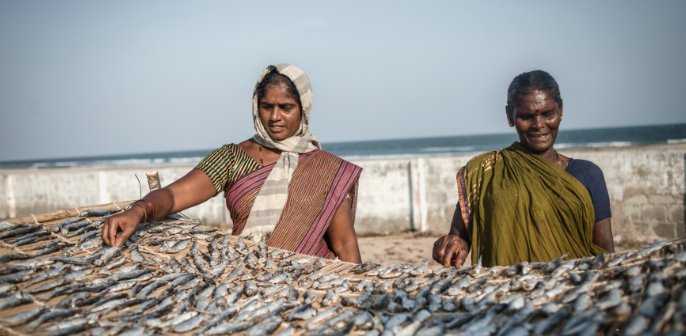+91 80 25586293
Projects
PROJECT DETAILS
ActionAid India works in 25 states and 1 union territory of India, with a vision to A world without poverty, patriarchy and injustice in which every person enjoys the right to life with dignity.
PROMOTING GRASS ROOT STRUGGLE
since: 2012
-
- Name Of The Initiative
- Promoting Grass Root Struggle and Communities Demanding Civil Rights
-
- Allied Organisation
- Social Need Education and Human Awareness (SNEHA)
-
- Working together since
- 01/01/11
-
- States
- Tamil Nadu, Pondicherry
-
- Villages Reached
- 51
-
- Blocks Reached
- 7 (Vedaranyam, Kilvelur, Nagapattinam, Sembanarkoil, Sirkali, Kollidam, Karaikal)
-
- Districts Reached
- 2 (Nagapattinam, Karaikal)
-
- No Of Boys
- 12,282
-
- No Of People With Disability
- 21,308
-
- Vulnerable Groups Reached
- Women, Children and men in governance structures and youth
-
- Name Of Communities
- Most backward communities (Fishing - Pattinavar)
-
- Focus Areas Of Intervention
- "Empowering the communities to access their rights over land, water, forests and other commons; advocating for their participation in public welfare schemes; restoring rights of women and girls, and ensuring their safety; ensuring the rights of children, their education and protection; and advocating for providig them with equal socio-economic opportunities. "
-
- Basic Information about the initiative
- "Sneha continues to work in 41 villages of Nagapattinam district and 10 villages of Karaikal district of which 5 are mixed caste villages (including Dalits and marine fishing communities) and the remaining villages comprise of exclusive marine fishing communities (with traditional fishing communities being the majority). The villagers are dependent on coastal resources for their livelihood and are engaged in fishing and allied activities. Socially fisherwomen, girls and boys face a variety of problems throughout their life cycle. Female foeticide is not uncommon in the area, with people going to Chidambaram for scanning and abortion. Child marriage of adolescent girls is not uncommon, though reducing with SNEHA’s interventions. Drop out amongst children is reduced now due to continuous monitoring. But the drop out of boys being for productive work is still there. Boys, youth and men hold patriarchal attitudes, and working with them is a must in addition to working with women and girls. Violence against women and girls is high, ranging from dowry harassment, to second marriage, sexual abuse etc. In this above said context, we need to focus on the following issues. • Emergence of new forms of dowry on deaths in in-laws families (Samanthi Seer) and Nalungu function (in betrothal, pregnancy and puberty). • Monitoring child abuse and corporal punishments in schools • Child Marriages after 17 years and before 18 years is still there. • Children dropping out from school between 15 to 18, especially among boys still needs attention"
-
- KeyWords
- Land; Livelihood; Rights; Governance; Women; Children; Youth
-
- Families Benefited
- 10,121
-
- Population Benefited
- 41,745
-
- Women Benefited
- 8,853
-
- Men Benefited
- 8,329
-
- Children Benefited
- 24,563




